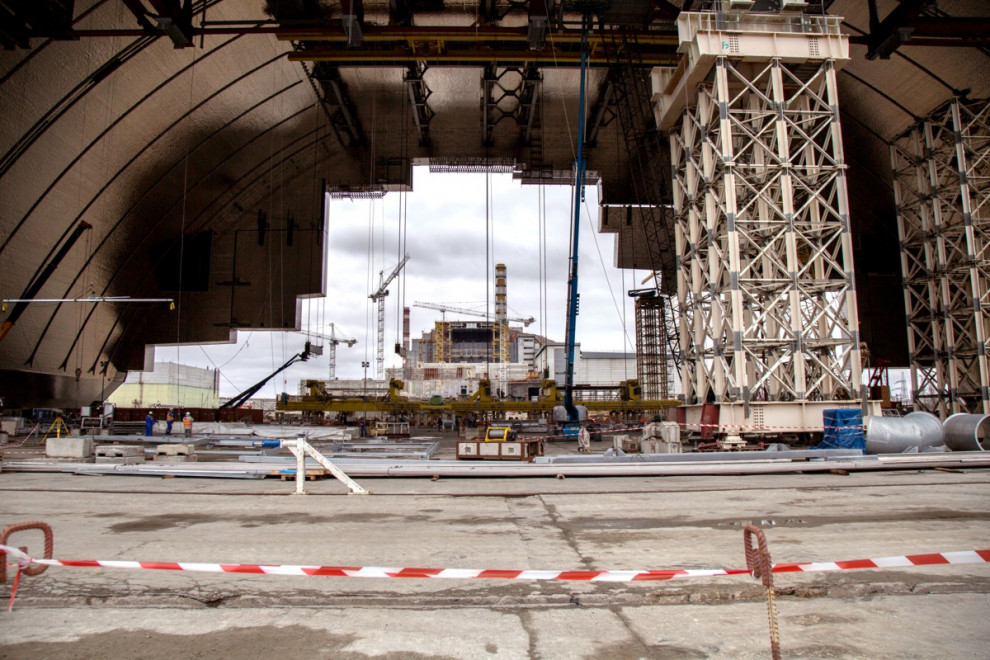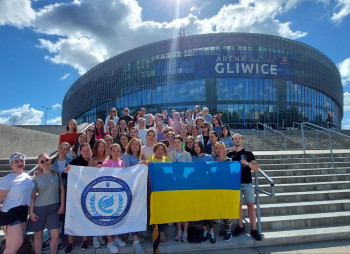- Hot testing has started at Interim Storage Facility 2 in Chernobyl
- Long-term storage for spent nuclear fuels from reactors 1, 2 and 3
- Final step before facility becomes fully operational
Hot testing has started at the Interim Storage Facility 2 (ISF-2) in Chernobyl where the spent nuclear fuels from reactors 1, 2 and 3 will be processed and stored in the world’s largest nuclear dry storage once full operations have started.
The start of hot testing on Thursday was approved by the Ukrainian regulator following the successful completion of previous system-wide trials of the facility, constructed by an international consortium led by the US company Holtec and financed by the international community through the Nuclear Safety Account, managed by the European Bank for Reconstruction and Development (EBRD).
The safe and secure processing and storage of the spent nuclear fuels at Chernobyl is one of the key remaining tasks at the site. While the 1986 accident destroyed reactor 4, the more than 21,000 fuel assemblies used in the RMBK-type reactors 1, 2 and 3 were removed in the following years and provisionally stored in a wet pond facility.
The new ISF-2 will replace the current site storage arrangements, providing safe storage for a minimum of 100 years. A purpose-built special train will transport the spent nuclear fuel assemblies to the ISF-2 facility where they will be cut, dried and packaged into double-walled canisters in the specially designed processing facility and – finally – transferred to the newly constructed onsite storage modules.
A total of 232 double-walled canisters will be safely stored, and monitored, for a minimum of 100 years in the individual concrete modules.
Balthasar Lindauer, EBRD Director, Nuclear Safety, said: ““Providing safe and secure storage for spent fuel is one of the most pressing nuclear safety challenges at the Chernobyl site. The start of hot testing at the new storage facility is therefore a major milestone. It is credit to the hard work of Chernobyl Nuclear Power Plant (ChNPP) and Holtec in overcoming many technical challenges as well as to the support of the donors to the Nuclear Safety Account. “
Volodymyr Peskov, ChNPP Acting General Director, added: “The hot tests are the result of many long-term preparations that went into this momentous moment. Our personnel exercises best efforts in order to successfully and safely perform this crucial task. Once fully operational, ISF-2 will ensure the safe storage for at least 100 years of the spent nuclear fuel accumulated during the period of the Chernobyl power plant’s operations.”
The Interim Storage Facility-2 cost €400 million and was financed with contributions by Belgium, Canada, Denmark, the European Union, Finland, France, Germany, Italy, Japan, The Netherlands, Norway, Russia, Sweden, Switzerland, Ukraine, the United Kingdom and the United States of America. The EBRD manages the international donor community’s funds to transform Chernobyl into a safe and secure environment and has also made financial contributions to this effort.






